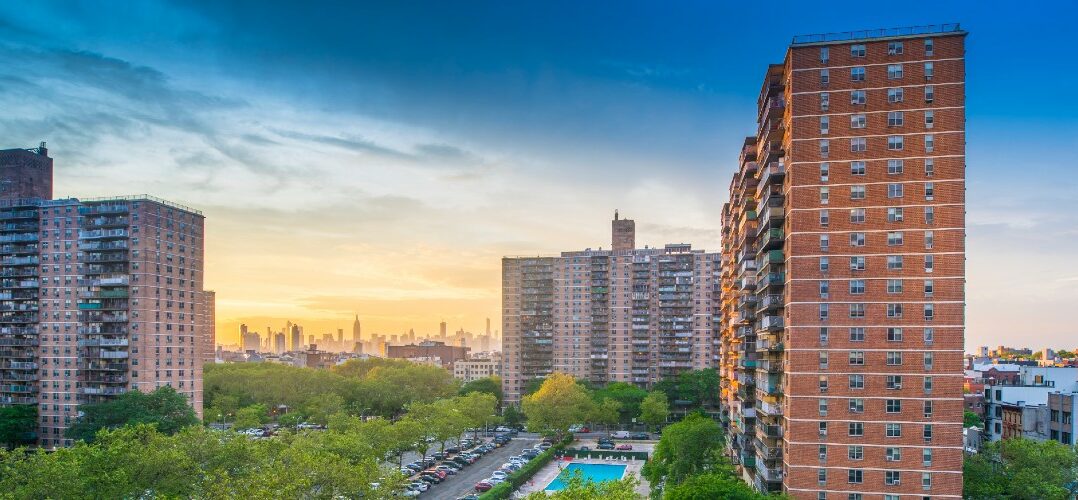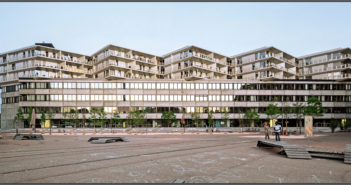This is a series of MIPIM Connect session reports from partner schools. In this post, University of San Diego reports on the Global Innovations in affordable housing. Watch this session and more on MIPIM Connect now!
According to recent statistics from Sharing.org, an estimated 100 million people are homeless worldwide and approximately 1.6 billion lack adequate housing. A shortage of quality affordable housing is a challenge in cities around the world, and the problem only gets worse as populations continue to increase. In this MIPIM Connect panel discussion, experts from three different countries discussed the current state of affordable housing in their respective markets and some of the ways in which they’re trying to bring product to market and help reduce housing insecurity, a problem that has been exacerbated during the COVID-19 pandemic. The panel was moderated by Alexandra Notay, who is a Fund Director at PFP Capital, and the panelists included Adam Challis, who is the Executive Director of EMEA Capital Markets Research & Strategy at JLL, Olivia Harris, who is CEO of Dolphin Living, Harold Spies, who is the founder of Similan Properties, and Kris Daff, who is the Managing Director at Assemble Communities.
Challis (below) began the session with an overview of what’s happening in global markets with regard to affordable housing. Challis commented that, going forward, innovation will definitely incorporate many of the lessons learned over the last few months during the pandemic. According to Mr. Challis, the most notable of these is the adoption of technology, including working from home and virtually collaborating and sharing ideas.

For many, the place that we work may no longer be a driver of the place we live, especially for those who are able to leverage technology and work remotely, part of the time or full time. Technology has also facilitated sustainability, which continues to provide many benefits to the various stakeholders in the delivery of affordable homes. With sustainability, tenants enjoy a healthier and better quality of life, landlords have lower maintenance and operating costs, and governments are able to achieve social objectives and a reduction of long-term service costs.
Challis is involved in an organisation called World Habitat, which he said has been very successful at identifying localized solutions and then scaling them to other areas that suffer from a housing shortage. According to Mr. Challis, it’s imperative that this kind of process happen in order to enable more supply, and it may include working with local governments to set policies that facilitate development and help achieve targeted solutions.
Institutional investors have begun to see opportunities in the affordable housing sector and that capital is starting to move into the market – Challis
Challis further noted that institutional investors have begun to see opportunities in the affordable housing sector and that capital is starting to move into the market. According to Challis, affordable housing has proven to have a very reliable and resilient revenue stream, a factor that has been underscored during the recent pandemic. The stability of the cash flows is very attractive to institutional investors like pension funds, even if it means a lower return than other investment options. Additionally, investors are becoming more interested in projects that tout sustainability and rate highly in measures of ESG. Mr. Challis speculated that there is about $330 billion of dry powder globally that is earmarked for real estate funds, and a portion of that may realistically be allocated to affordable housing, if the right opportunities are presented.
Speaking next was Olivia Harris (below), who is CEO of Dolphin Living, a company that specializes in the development of affordable housing in London. Dolphin Living targets those who have modest incomes and fall into the “gap,” i.e., they’re unable to buy a home and can’t afford market rents, but they also don’t qualify for social housing assistance.

Harris illustrated two models her company is utilizing to help fill this need. First is the Westminster home ownership accelerator, which helps individuals acquire their first home. Under this programme, individuals live in a rental flat for three years where they pay only 65% of market rent. This allows them to build up savings, and then at the end of the tenancy they receive a grant from Dolphin Living that reflects the price appreciation in the unit. They can then invest that money along with their own savings in the purchase of a new home.
The second program Harris described is a personalised rent policy. Harris explained that in London, affordable rent is defined as either 40% of net earnings or a third of median income, but that these calculations don’t take into account different household composition and costs of living. For example, either a single person or a married couple might be able to occupy the same one bedroom flat, but their expenses and ability to pay rent might be quite different. With personalised rent, the company uses minimum income standards to calculate what each household’s living costs should be. The rent correlates directly with those minimum living costs, and as the household earns more money it can enjoy having more disposable income which can be applied toward the purchase of a home.
Harold Spies (below) is the founder of Similan Properties, which he formed in 2010 to help shape the way that homes are designed, developed and sold in South Africa. Spies noted that a significant portion of South Africa falls into the category of housing insecurity, so there is a great need for affordable housing. Like Dolphin Living, Similan develops affordable homes for households that have modest income but do not qualify for government subsidy. The company receives funding from institutional investors and is seeing growing interest from impact funds that invest in South African markets.

In many cases, local governments are unable to provide the water and electricity needed, so the company must find innovative ways to supply water and to develop their own energy for these developments – Spies
Spies explained that Similan’s housing production has several main drivers, with the most important being sustainability and the provision of water and electricity. In many cases, local governments are unable to provide the water and electricity needed, so the company must find innovative ways to supply water and to develop their own energy for these developments. As an example, the company has used water ponds in a system that purifies all the gray water from a development and repurposes it for irrigation. Similarly, Similan attempts to generate at least 30%-40% of the energy required on a project themselves, and the rest they obtain from the grid.
Similan also utilises proptech to help manage their developments. They attempt to have as much of a social impact as they can by creating attractive, quality places to live so that tenants will want to stay. Similan’s goal is to develop projects where people can realize a sense of community and develop relationships that will encourage them to live there in the long term.
Assemble Communities is another builder of affordable housing and is based in Australia. The company has a portfolio of about 1,000 apartments for middle income renters and another 3,500 units that constitute affordable housing. The company recently took on an institutional partner, AustralianSuper, a great example of the influx of capital into the affordable housing space. Kris Daff (below) commented that Australia has a huge housing shortage, with a need for 400,000 to 500,000 new dwellings over the next 6 to 7 years. Accordingly, Assemble searches for ways to attract new institutional investment so they can continue to build product and help solve the housing supply problem.

Assemble has a couple of different approaches with its rent structure. The first is intended to be a pathway to ownership. It involves the rental of a unit for a five-year tenure. During that time the company offers financial coaching services and support to the tenant to help them save for a down payment on a home. According to Mr. Daff, the long rental term is intended to give people a chance to make connections in their community, have their kids in the same school for the duration, and ultimately to reduce housing insecurity. The other model involves social rental and subsidies to help those most in need. The development of those units is supported by government incentives and tax advantages.
The long rental term is intended to give people a chance to make connections in their community, have their kids in the same school for the duration, and ultimately to reduce housing insecurity – Daff
Alexandra Notay, the panel moderator (below), commented that approximately half of the Australian population is actually eligible for affordable housing but there is a huge shortage of supply. Accordingly, there is great demand for Assemble’s product and it seems very likely that it will continue to appeal to institutional investors, especially since the company’s projects are able to generate stable 10% risk-adjusted returns, as reported by Mr. Daff.

In sum, this session was a thought-provoking review of comparative strategies for supplying affordable housing around the world. While each country has its own set of issues to navigate, there were common themes that emerged in the pursuit of solutions to the housing shortage. Sustainability and ESG have become very important to the creation of desirable communities with satisfied tenants. And with good property management, cash flows are very consistent in this space, which ultimately appeals to investors and can help raise capital for future development. Affordable housing product is also improving in quality, which is more appealing to potential renters, and thus investors. Finally, it seems that each market has the challenge of supplying housing for those who don’t qualify for government subsidies but at the same time cannot afford market rate homes. The models that were illustrated to address this problem have shown success and should provide good examples for other localities that are facing a similar housing dilemma.
Given the current pandemic crisis, safe and affordable housing has become more critical than ever. With the help of innovators like those on this panel, we’ll hopefully continue to find ways to build and deliver the affordable housing supply that is so desperately needed around the world, eventually making housing insecurity a thing of the past.



